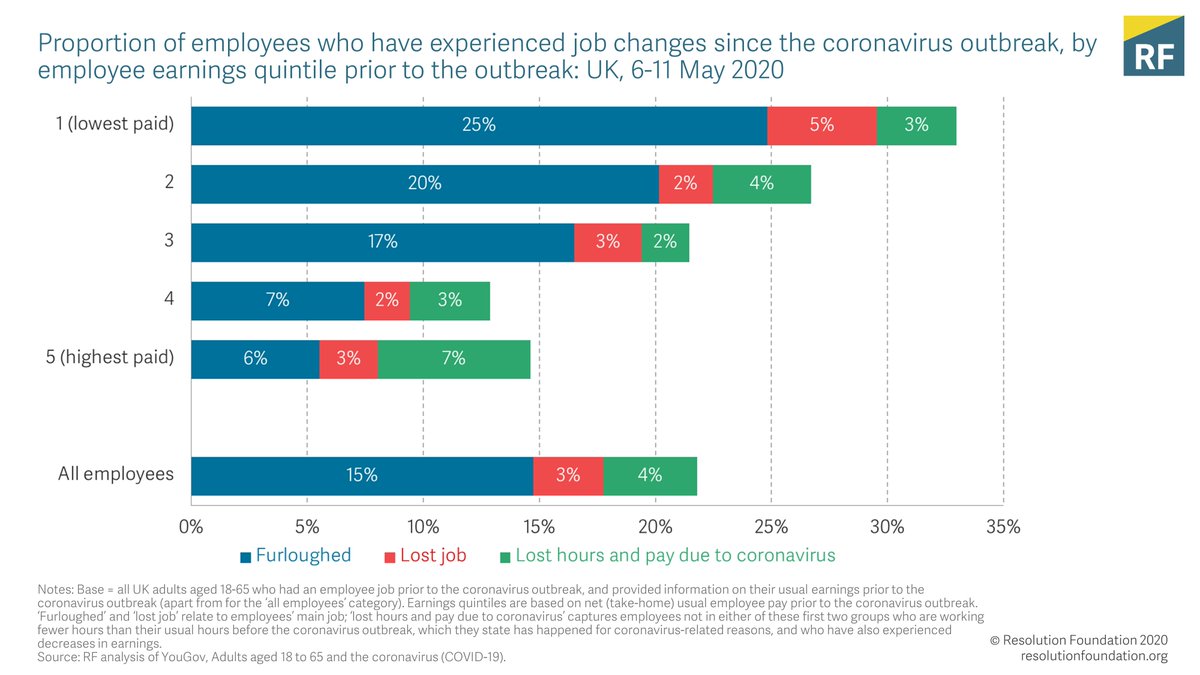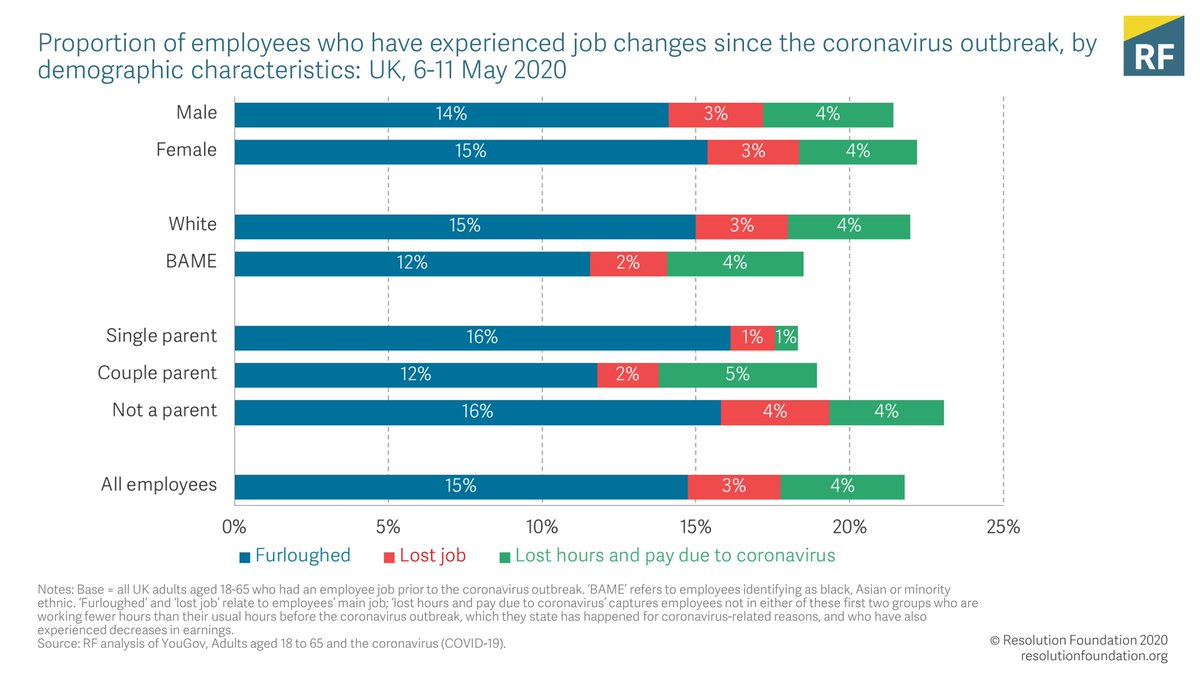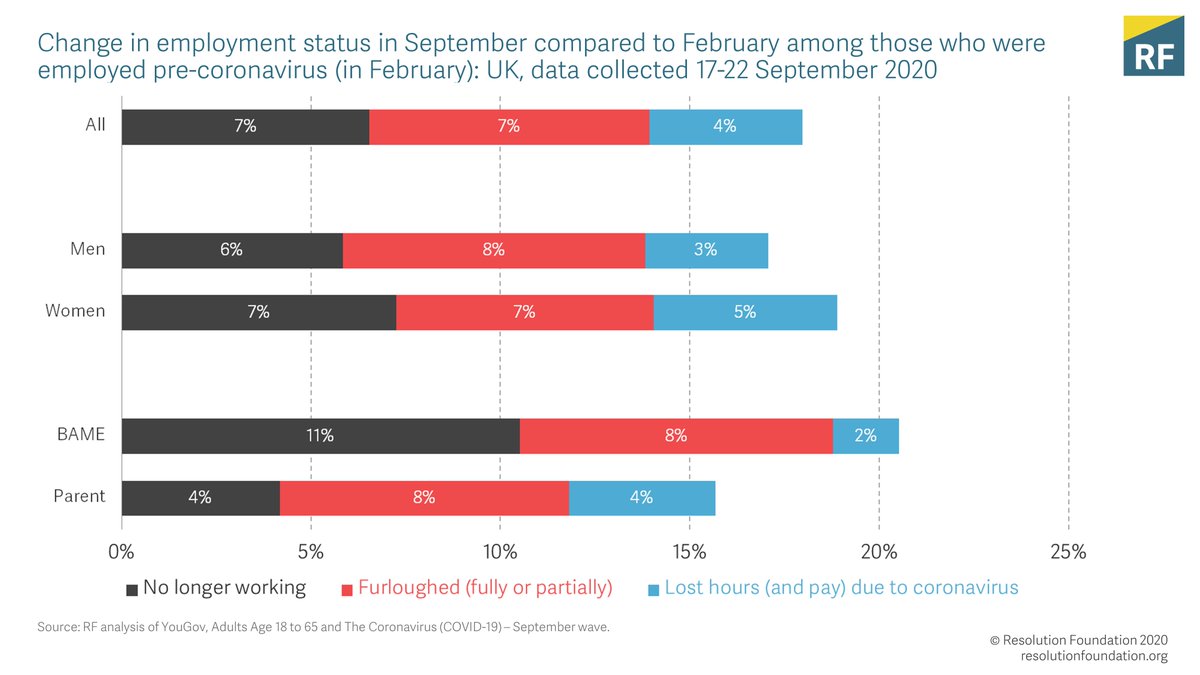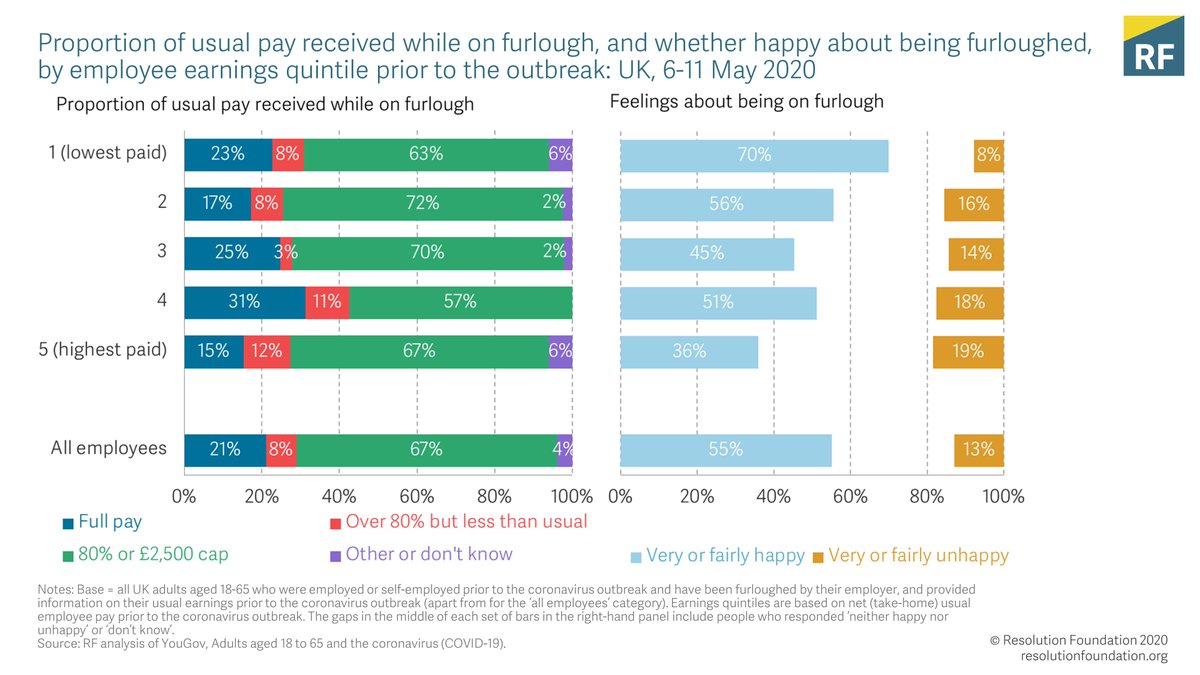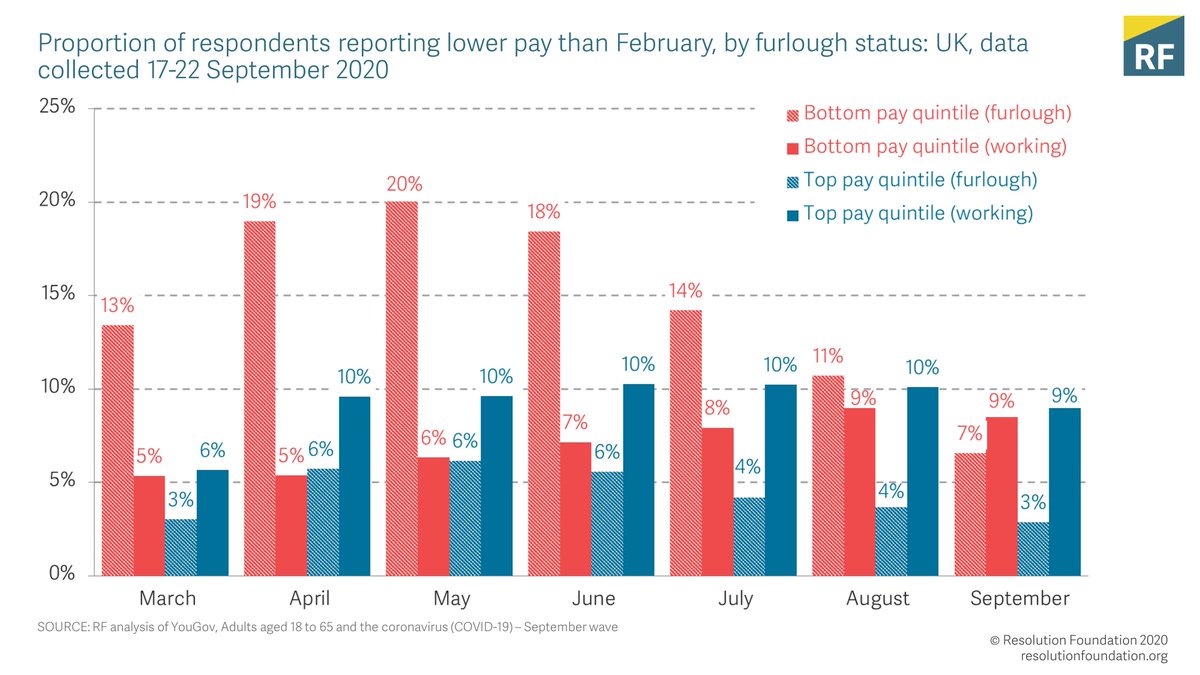In order to fully understand how the coronavirus crisis has evolved over the past eight months, we’ve put together a series of comparisons highlighting how the jobs market has changed between our May and September surveys…
Job changes (earning quintile):
Back in May, 30 per cent of the lowest-earning workers were furloughed or lost their jobs compared to 8 per cent of the highest earners. However, the difference in lost hours and pay between quintiles is much less dramatic.
Back in May, 30 per cent of the lowest-earning workers were furloughed or lost their jobs compared to 8 per cent of the highest earners. However, the difference in lost hours and pay between quintiles is much less dramatic.
By September, the number of workers on furlough across all pay quintiles had roughly halved, but job losses were overwhelmingly for the lowest paid workers - 13 per cent had lost their jobs since February compared with 7 per cent UK average.
Job changes (demographics):
Six months ago, there was little variation in experience of furloughing, jobs lost, or hours and pay lost by demographic characteristics.
Six months ago, there was little variation in experience of furloughing, jobs lost, or hours and pay lost by demographic characteristics.
This was generally still the case in September - with the percentage of workers unemployed rising and furloughed falling - except for Black, Asian and minority ethnic workers, of whom 11 per cent were out of work compared to 2 per cent in May.
Pay change:
In May, most employees who were furloughed received either 80 per cent of their previous pay, or the £2,500 cap for higher earners. More than half were happy about being furloughed (54 per cent), rising to seven-in-ten among the lowest paid.
In May, most employees who were furloughed received either 80 per cent of their previous pay, or the £2,500 cap for higher earners. More than half were happy about being furloughed (54 per cent), rising to seven-in-ten among the lowest paid.

 Read on Twitter
Read on Twitter